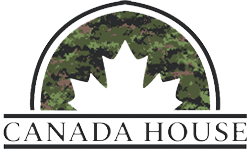The most explored cannabinoid in cannabis is THC. It is one of the most feared cannabinoids in the cannabis plant, and yet if taken suitably it can provide us with many therapeutic benefits.
THC is not present in all cannabis products, but when it is, it can cause euphoric feelings. Many patients request THC-free care plans, not knowing the therapeutic background or are aware there are safe ways to introduce this cannabinoid. Much of this decision is driven by the stigma THC has been given over the years. If taken safely, you could avoid the negative effects it could cause, this is the same for any medication you can pick up over the counter or prescribed. Everything comes with caution. Consumers have reported paranoia, anxiety, and panic. It is important to take small amounts of THC when you are first implementing this cannabinoid into your care plan. As a first dose, no more than 2.5mg is recommended.
Research on THC began in the 1960s in Israel. THC was injected into aggressive rhesus monkeys, after injection, they noticeably became calm and relaxed. At that time, researchers recognized there was a receptor in the brain, but only called them cannabinoid receptors. It was not until the late 80s when Professor Allyn Howlett and her student cloned the receptor and called it, CB1. When you consume THC, it binds to several areas in your body, specifically the CB1 receptors. These receptors are found throughout your Central Nervous System (CNS), and they outnumber any other receptor in your CNS. They work as a control system for your body’s other neurotransmitters that control physiological processes including pain, memory, emotion, sleep, appetite, fertility, and more.
When THC isn’t present, then what is working with the CB1 receptors?
Your body produces a natural chemical called Anandamide, let’s call it AEA for the purpose of this article. When this chemical is running low in your system, you may notice nerve pain, depression, stress-induced anxiety, insomnia, lack of appetite, and overall, you feel “out of balance”. THC’s molecular structure is very similar to AEA, so when you are experiencing a symptom as mentioned, THC may be the best-suited cannabinoid for you.
AEA can decrease in your body for a few reasons, external stressors, little to no exercise regime, poor nutrition, medications, and can you believe it, touch! Lack of human touch can decrease your AEA levels. We’re not telling you to rush out and touch anyone, for obvious legal reasons, but hugs over handshakes never hurt anyone.
Potential Therapeutic Benefits
The most highly researched conditions treated with THC include Acute and Chronic Pain, Cancer, Multiple Sclerosis, Cognitive Dysfunction, Glaucoma, Nausea, and Vomiting. There are over 70 medical conditions, both physical and psychological THC has been researched for symptom management with positive outcomes.
Understanding THC potency in Cannabis.
Each cannabis product contains a different potency of THC. On every package, you will see THC and Total THC. THC is the percentage of active THC in the product before applying heat, the Total THC is the THC amount after heating it. Sometimes these amounts can be the same. This measurement is in relation to other components in the plant, so when you see 20% THC, it still contains 80% other components in the cannabis product you have selected.
Higher THC percentages don’t necessarily get you “higher”, in fact, research has demonstrated utilizing high-potency cannabis has only boosted blood levels, but didn’t make consumers higher. There are hundreds of other components in the plant that contribute to its effects at percentage levels higher than the THC, they make up the “entourage effect”. THC can gain or lose its effectiveness when combined with other cannabinoids, terpenes, canna flavonoids, phenols, esters, and more.
Benefits of Micro-Dosing
As the name implies, micro-dosing means small doses of THC to accomplish symptom management either psychologically or physically. You can receive maximum benefit from a minimal amount, saving you money and mind fog in the end. Research and consumer reports have demonstrated with micro-dosing you can regulate mood, boost creativity, enhance mindfulness, and increase energy and concentration. It does not take a lot of THC to activate our CB1 receptors. Needing more may be your body’s way of telling you, you need a tolerance break.
Less is More.
Tolerance Breaks
Consumers, with chronic use can develop what is called, THC tolerance. Over time, with daily and chronic use of THC, your CB1 receptors begin decreasing in numbers, they are still present, they are just not active. This requires you to increase your THC dosing to have the same symptom relief. Too much consumption can lead to short-term memory loss, brain fog, and increased anxiety/depression. If you are not sure how to perform a tolerance break, talk to your medical team or one of our educators at Canada House.
You should try a tolerance break every 3-4 months.
THC is a miraculous cannabinoid and was the first to be utilized medically for a reason. Forget the stereotype of THC, embrace it, and take the time to learn about it. Contact your closest Canada House location for more information.

